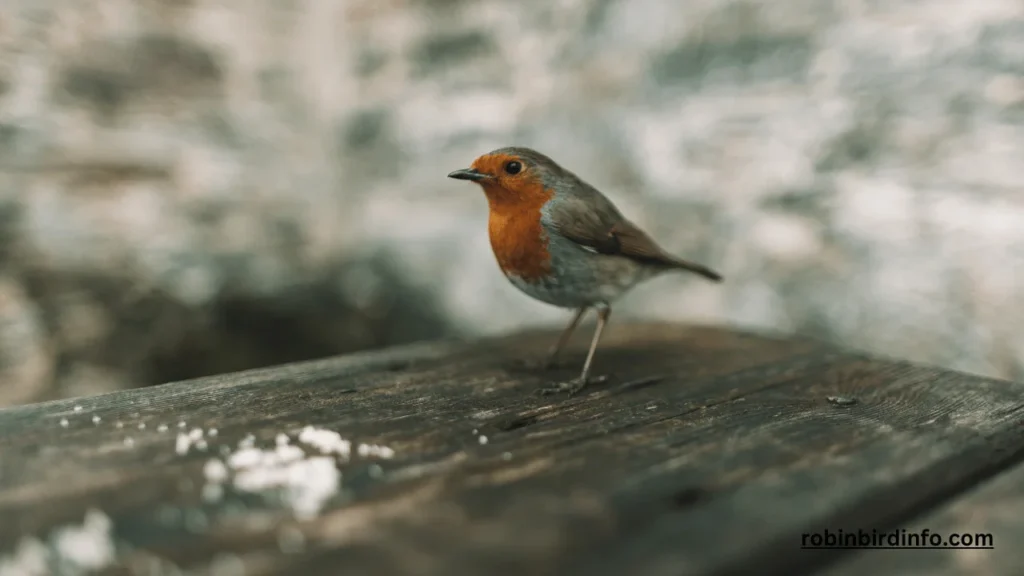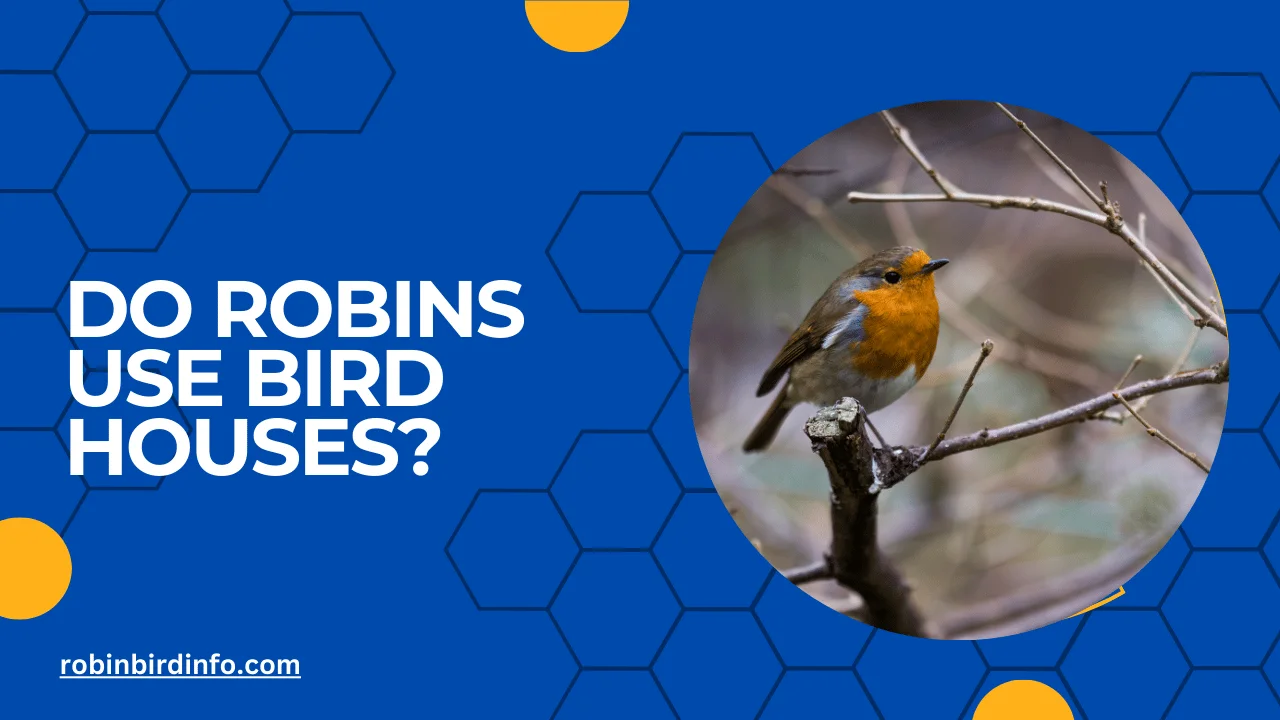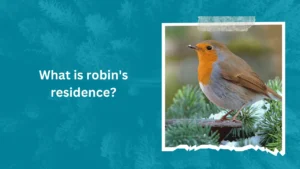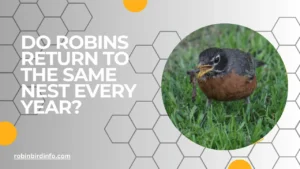You’ve meticulously assembled the perfect birdhouse, proudly displayed in your garden, a welcoming haven for feathered friends.
But will Robins, those cheerful songbirds gracing your backyard, actually become tenants? This seemingly simple question holds a surprising answer! Robins, despite their frequent association with birdhouses, have distinct preferences when it comes to raising their young.
Understanding Robin nesting behavior goes beyond simply attracting them to your yard. It’s a peek into their fascinating world, where survival instincts and resourcefulness play a crucial role.
This blog post delves deeper into the truth about Robin nest sites, exploring the reasons behind their choices and offering valuable insights into creating a bird-friendly haven that caters to their natural nesting preferences. So, grab a cup of tea, settle in, and get ready to discover if your birdhouse might be the perfect fit for a Robin family, or if there’s more to the story!
Contents
Section 1: Natural Nesting Sites
Robins are known for their preference for natural nesting sites. They often choose tree cavities, shrubs, and vines to build their nests. These natural sites provide protection from predators and harsh weather conditions.
Robins construct their nests using a variety of materials, including twigs, grasses, and mud. The intricate process of nest building involves carefully weaving these materials together to form a sturdy and well-insulated structure.
The placement of the nest is crucial for the survival of the young. Robins typically choose nest sites that are sheltered from wind and rain, and that offer easy access to food and water sources.
Section 2: The Appeal of Birdhouses
While Robins prefer natural nesting sites, they may occasionally use birdhouses if suitable natural cavities are limited. To attract Robins to a birdhouse, it’s important to consider several factors.
The design of the birdhouse should be appropriate for Robins. The entrance hole should be large enough for Robins to enter and exit easily, but small enough to deter larger birds and predators. The interior of the birdhouse should be spacious enough for the nest and the growing nestlings.
The location and placement of the birdhouse are also important. It should be placed in a sheltered location, away from direct sunlight and heavy rain. The height of the birdhouse should be sufficient to deter predators, but not too high to discourage Robins from using it.
Regular maintenance and cleaning of birdhouses are essential to prevent the spread of disease and attract new tenants. Old nests should be removed before the breeding season to encourage Robins to use the birdhouse.
Section 3: Factors Influencing Nest Site Selection
Several factors influence a Robin’s decision to choose a particular nest site. Habitat availability is a crucial factor. The availability of suitable nesting sites, such as trees and shrubs, can impact Robin nesting behavior.
Predator pressure is another important factor. Robins are vulnerable to predation from a variety of predators, including cats, snakes, and birds of prey. They choose nest sites that offer protection from these predators, such as those located high in trees or in dense vegetation.
Competition for nest sites with other bird species can also influence Robin nesting behavior. Robins may compete with other bird species, such as House Sparrows and European Starlings, for suitable nesting sites.
Section 4: The Impact of Human Activities
Urbanization and development can significantly impact Robin nesting behavior. As urban areas expand, natural habitats are lost, and suitable nesting sites become less available. Birdhouses can provide artificial nesting opportunities in urban environments.
Bird feeding can indirectly affect Robin nesting behavior. By attracting insects and other food sources, bird feeders can create favorable conditions for Robins. However, it’s important to avoid overfeeding birds, as this can lead to overcrowding and competition for nesting sites.
Pesticide use can negatively impact Robin populations by reducing the availability of insect prey. Pesticides can also harm nestlings and reduce reproductive success.
Section 5: Conservation Implications

Protecting natural habitats is crucial for the conservation of Robins and other bird species. By preserving forests, woodlands, and other natural areas, we can provide suitable nesting and foraging habitats.
Encouraging bird-friendly practices in our gardens and communities can also help to support Robin populations. Planting native plants, providing clean water sources, and using eco-friendly pest control methods can create a welcoming environment for Robins.
Monitoring and research can help us better understand Robin nesting behavior and the factors that influence their success. By studying Robin populations and tracking their nesting habits, we can identify potential threats and develop effective conservation strategies.
Conclusion
While Robins primarily prefer natural nesting sites, they may occasionally use birdhouses, especially in urban areas where natural nesting opportunities are limited.
By understanding the factors that influence Robin nest site selection and providing suitable nesting options, we can help to support these beloved birds and contribute to their conservation.
By creating bird-friendly environments and practicing responsible land use, we can ensure that future generations can continue to enjoy the beauty and song of Robins.
FAQ’s
Do Robins typically use birdhouses?
While Robins prefer natural nesting sites like tree cavities and shrubs, they may occasionally use birdhouses, especially if suitable natural cavities are limited.
What kind of birdhouse is best for Robins?
Robins generally prefer open-front birdhouses with a large entrance hole, around 1.5 inches in diameter. The interior of the birdhouse should be spacious enough for the nest and the growing nestlings.
Where should I place a birdhouse for Robins?
The birdhouse should be placed in a sheltered location, away from direct sunlight and heavy rain. It should also be placed at a height of 5-10 feet to deter predators.
How can I attract Robins to my birdhouse?
To attract Robins to your birdhouse, you can provide a suitable nesting site, offer a variety of food sources, and create a bird-friendly environment. Planting native plants, providing clean water sources, and avoiding the use of pesticides can help attract Robins to your yard.
What materials should I use to build a Robin birdhouse?
You can use untreated wood, such as cedar or pine, to build a birdhouse for Robins. Avoid using treated wood, as it may contain harmful chemicals.
How often should I clean a birdhouse?
It’s recommended to clean birdhouses once or twice a year, preferably in the late fall or early winter. Cleaning the birdhouse will help to prevent the spread of disease and attract new tenants.








